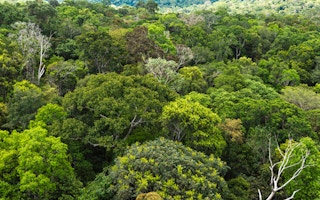More than half of all tree species in the Amazon forest could be at risk of extinction, according to new research.
There are at least 15,000 species of tree in and around the Amazon basin and the Guiana Shield. At the lowest estimate, 36 per cent are at risk, but the proportion under threat could also be as high as 57 per cent.
And since the Amazon rainforest is one of the planet’s richest habitats, and since what is true for one tropical great forest must apply to others, the research suggests that the number of threatened plant species on the planet could rise by 22 per cent.
Tropical trees worldwide number more than 40,000 species, and most of these may qualify as being to some degree threatened.
Deforestation maps
Hans ter Steege, research fellow at the Naturalis Biodiversity Centre in the Netherlands, and 157 colleagues from 21 countries report in Science Advances journal that they started with data from 1,485 forest inventories and measurements of species density from more than 1,600 plots of forest made across the Amazon region.
They matched the information with maps of deforestation happening right now, or projected to happen, and then used statistical methods to make a range of estimates of the numbers of species at risk.
The forests of the Amazon have already lost 12 per cent of their original extent. By 2050, they could have lost at least another 9 per cent, and perhaps as much as 28 per cent. The forests are at risk from invasion by people hungry for land, and exploitation for mining and dam construction, as well as fire, drought and climate change.
Although the scientists used the internationally-agreed International Union for the Conservation of Nature “Red List” criteria to arrive at the estimates of potentially threatened species, these trees have not yet been formally listed as under threat on a case-by-case basis.
The researchers make the point that protected areas and indigenous territories now cover about half of the Amazon basin, and they calculate that these must, for the moment, protect large populations of most of the threatened species. But, they say, these areas will offer protection only if they suffer no further degradation.
“This is good news from the Amazon that you don’t hear enough of,” Dr ter Steege says. “In recent decades, Amazon countries have made major strides in expanding parks and strengthening indigenous land rights. And our study shows this has big benefits for biodiversity.”
But his co-author, Rafael Salomão, an environmental scientist at the Emilio Goeldi Museum in Belem, Brazil, says: “The vast majority of protected areas in the Amazon have no management plan or budget, and few resident qualified personnel.”
Another co-author, William Laurance, research professor at James Cook University in Queensland, Australia, says: “Either we stand up and protect these critical parks and indigenous reserves, or deforestation will erode them until we see large-scale extinctions.”
The Amazon forests matter to climate scientists because they represent a powerful agency in the carbon cycle. And they matter to the people of South America because they are home to a fabulous diversity of creatures.
Scientists have repeatedly found that the more diverse an ecosystem, the more likely it is to survive stress − and stress has been the Amazon forest experience now for decades.
Ranchers, planters and loggers want to clear great tracts of it, and the loss of forest is now problem for at least five nations in the region.
Greenhouse gas levels
Extremes of drought and heat present one kind of threat, and long-term climate change − driven by rising greenhouse gas levels in the atmosphere, as a consequence of the combustion of fossil fuels − is another.
Nigel Pitman, senior conservation ecologist at the Field Museum in Chicago, and another co-author of the report, says: “We aren’t saying that the situation in the Amazon has suddenly gotten worse for tree species. We’re just offering a new estimate of how tree species have been affected by historical deforestation, and how they’ll be affected by forest loss in the future.”
Under one scenario, even an iconic and economically important species such as the wild Brazil nut (Bertholletia excelsa) could lose 63 per cent of its population, the scientists say.
The Amazon represents the world’s last great tract of rainforest. Africa has already lost 55 per cent of its tropical forest, and Asia has lost 35 per cent, mostly since 1900. That means that many old world tree species must have lost populations.
And the scientists say that since 90 per cent of all tree species on Earth are tropical trees, trees deserve to be considered along with cycads, amphibians and corals as those groups with the highest proportion of threatened species.

















